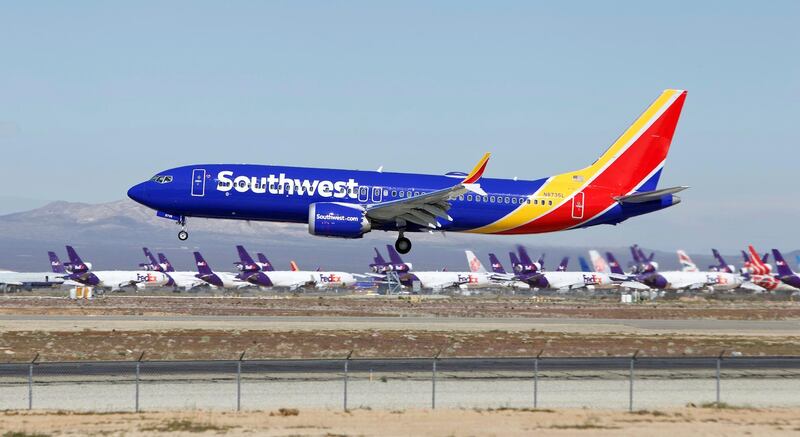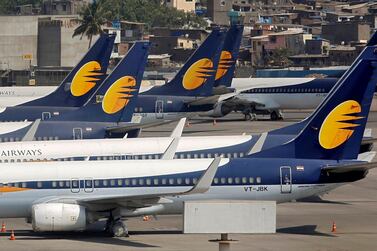Southwest Airlines first learnt from Boeing after a deadly Lion Air crash in October that an alert warning pilots of a sensor malfunction linked to the disaster was not a standard feature on the 737 Max.
The world’s largest 737 operator and its pilots had thought that the warning light worked on all Max jets, as it had on the previous generation of 737 aircraft, Southwest said on Sunday. The airline only learnt after the accident that on the Max, the feature was connected to a separate indicator display –available for a fee – that provides readings from the plane’s two angle-of-attack (AOA) vanes.
“It was presented that it worked,” Jon Weaks, president of the Southwest pilots union, said of the so-called AOA disagreement alert. “It wasn’t presented that you had to have two AOA indicators on the primary flight display for it to work.”
The revelation raises new questions about Boeing’s best-selling jet as the company works to convince airlines and regulators that the Max will be safe once a software update is installed. The manufacturer is already under scrutiny over how it communicated critical details of the sensors and new software known as MCAS to airlines and regulators. US pilot unions were furious to learn that MCAS was not explained in crew manuals and training materials.
The sensors, which measure the tilt of an aircraft against onrushing wind, played a role not just in the Lion Air crash off the coast of Indonesia but in a subsequent tragedy less than five months later in Ethiopia. The two accidents killed a total of 346 people, and regulators around the world grounded the plane after the Ethiopian Airlines 737 Max 8 fell out of the sky March 10 minutes after take-off from Addis Ababa.
In both disasters, erroneous readings from a single angle-of-attack vane activated the Manoeuvring Characteristics Augmentation System, a previously obscure system that was added to the Max. That overwhelmed flight crews by repeatedly pushing the jet nose downward.
Southwest had assumed, until it learnt otherwise from Boeing, that the Max’s primary flight display included an alert that showed when the AOA vanes were sending conflicting data to the plane’s flight computers, said Brandy King, a spokeswoman for the Dallas airline.
After the October crash, Boeing told the airline that the so-called disagree light only worked if customers bought an additional AOA indicator display. That was not the case on the previous NG variant of 737s. The Max entered commercial service in May 2017.
“After the Lion Air event, we were notified that the AOA disagree lights were inoperable without the optional AOA indicators on the Max aircraft,” Ms King said, referring to the equipment by its acronym. “The manual documentation presented by Boeing at Max entry into service indicated the AOA disagree light functioned on the aircraft, similar to how it works on our NG series.”
She spoke in response to an account in The Wall Street Journal.
After discussing the matter with Boeing, Southwest opted to add the angle-of-attack indicator to the primary flight display of its Max fleet, which resulted in the disagree lights also being activated. Boeing has since decided to make the AOA disagree a stand-alone feature on the Max, independent of the indicator. The Chicago manufacturer will also add the indicator at no cost for airlines that want it.
“A new software update will separate those two features, making AOA disagree alert a stand-alone standard feature and keeping AOA indicator as an additional customer-selected option,” said Chaz Bickers, a Boeing spokesman.
The Wall Street Journal reported that the discrepancy at Southwest prompted some mid-level Federal Aviation Administration officials to consider grounding the 737 Max after the Lion Air jet plunged into the Java Sea, minutes after taking off from Jakarta on October 29.
“We are not commenting on the so-called internal communication,” the FAA said.
Ms King disputed that Boeing intentionally deactivated the angle-of-attack disagree lights on Southwest's jets, as the Journal suggested. And Southwest's pilots were never aware of any discussion at the FAA to ground the airline's Max aircraft shortly after the Lion Air crash, Mr Weaks said.
The gauges are not considered critical tools by most commercial pilots, although they may have alerted flight crews on the doomed flights to the haywire data reading that tripped MCAS along with audible and physical alarms known as a stick-shaker. Southwest aviators are not trained to routinely use AOA indicators while flying, Mr Weaks said.
“The AOAs are there as a nice cross-check and another safety tool, but airlines don’t train on flying by AOA,” Mr Weaks said. “Is it important? Sure. Is it nice to have? Sure. But it’s not what we primarily base flying the airplane on.”
Southwest is the largest operator of the Max, with a 34-jet fleet. The budget carrier has taken the aircraft out of its flight schedule through August 5. The grounding of the Max, along with flight cancellations tied to weather and a labour disruption, carved $200 million from first-quarter revenue and $150m from net income.
“We’re not happy with the situation,” Southwest president Tom Nealon said about the parked planes. “Who would be? Boeing has already conceded that there are things that they need to address. And obviously, we totally agree with that.”







